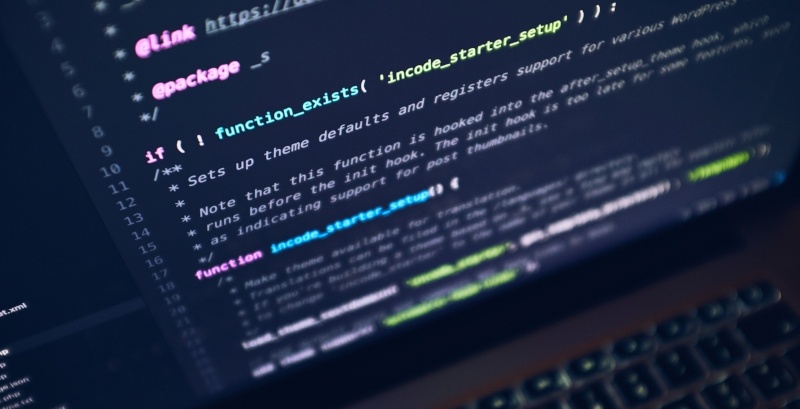Maintaining Support Throughout Your IT Maintenance Lifecycle
Understanding the IT maintenance lifecycle of your network equipment ensures that your organization maintains coverage even as end-of-life and end-of-support dates approach. Following the policies of each network life cycle equipment provider is a complex undertaking; especially since the terminology, dates, and definitions vary from one original equipment manufacturer (OEM) to the next and do not match with traditional IT asset management stages.
In IT asset management, the life cycle is broken into planning, procurement, deployment, usage, upgrade, decommission, and salvage. According to TechTarget, efficient IT asset lifecycle management provides “better knowledge of the requirements for a planned asset purchase, better-informed purchasing decisions, timely replacement of consumables and resources, a more complete picture of total cost of ownership.”
IT Asset Management Life Cycle Stages and Life Cycle Equipment
Planning
During the planning stage, your organization is assessing its needs and matching those needs with available budget resources. This is when CapEx optimization discussions occur as various departments vie for a piece of the pie. The overall goal, of course, is to maximize every dollar by only purchasing what is needed and paying particular attention to the purchase of assets that deliver the greatest ROI.
If your planned purchases include network equipment, understanding where your existing hardware and the hardware you plan to purchase is within the OEMs product lifecycle is critical. There are few things more frustrating than buying an expensive piece of hardware equipment only to receive an End-of-Life notice just a few months later.
Planning the purchase of the equipment is only half the battle.
- How will you support the equipment?
- Will the equipment interact with existing hardware and how will support for each of these individual units be reconciled during a moment of crisis?
- Where will you turn when an update in one area causes errors and downtime in another?
- What level of support is included in the purchase of the equipment?
- How does included support match with business’ needs?
- If there is a gap, will you purchase support from the OEM or an independent provider?
The answer to each of these questions requires careful consideration and can quickly add unforeseen dollars to your planned budget. Understanding how hardware equipment will be supported is just as important as knowing which hardware to purchase.
Procurement
Now it is time to spend those CapEx dollars. Do you purchase directly from the OEM or turn to an authorized reseller? What about acquiring refurbished or used equipment from someone else? Each of these options will affect the level of support included in the purchase. Generally, OEM supported equipment includes some level of entitled support service. Depending on the criticality of the hardware, this entitled support may be all that is required to meet the needs of the business. However, if the equipment is vital to the operation of the business or supports customer-facing processes, additional support may be in order.

If equipment is purchased as-is, it probably does not include any entitled support. It may not even be possible to buy support from the OEM. In this case, third-party maintenance is your only option, and even then, depending on the age and condition of the equipment, procuring support may be tough and it’s difficult to separate the high and low quality providers.
Deployment
During the deployment stage, the hardware is integrated with your existing network equipment and made ready for use. During this time, all support and warranty information should be funneled to an asset management tool.
Ideally, all of your network equipment is controlled under an asset management tool, one that logs the location, applicable service level agreements, entitled support agreements, serial number, model number, and responsible party information.
When accessing support, many providers require clients to provide support contract numbers, the company name, and access to the individuals named in the support agreement. If any of the provided information fails to match with the support providers system, support may be denied. Even something as simple as company name mismatch (Files Inc. vs. Files Incorporated) can result in a denial of service.
Usage
This is the longest stage of most network equipment life cycles and is the time when the company realizes ROI. Network equipment in this stage should be adequately covered by service level agreements that meet the needs of the business by ensuring an optimized level of support.
A critical piece of hardware may warrant an SLA that guarantees four-hour hardware replacement and field engineering support. However, on a less crucial piece of equipment, this level of support is unnecessary and can contribute to overspending and a next-business-day non field engineering support agreement may make more sense. In some cases, the equipment may have all of the support the business needs included in the purchase price. In this case, covering the equipment with an additional SLA results in overspends.
Upgrade
Whether the upgrade is to the software or to the hardware, changes made to network equipment can impact OEM support agreements. All new configurations should be noted in an asset management tool, and support providers should be notified. A proactive approach is to notify your support providers before the upgrade is implemented to be sure that the change in configuration will not void your current SLA.
In many cases, upgrades are deployed by the support provider and not by internal IT teams. When this occurs, unexpected, downstream effects can result in downtime or errors in processing. When possible, it is best to coordinate communication between all support providers before a crisis occurs. To do this, structure your SLA so that your support providers agree to collaborate to restore service when an issue involves multiple pieces of hardware.
During this usage stage, it is also important to continually evaluate the usefulness of your network hardware. Often, when a piece of hardware is no longer needed, it is simply unplugged and moved to a storage area. If a piece of equipment is no longer being used, support is no longer required. However, many businesses routinely renew service level agreements without checking that the covered hardware is still in-use.
Decommission
Instead of moving equipment into storage, hardware that is no longer used for its original purpose should be decommissioned. During decommissioning, the change in equipment usage should be noted in the asset management system and all applicable support agreements should be updated. In some cases, this will result in immediate cost-savings. However, some contracts will not update pricing until the end of the support period is reached. In either instance, updating support agreements and asset management systems as soon as the hardware is no longer in-use prevents the business from unknowingly renewing support on equipment that is no longer used.

Salvage
When hardware is decommissioned, it is no longer in-use anywhere within the organization. Storing this equipment takes up valuable real estate, and responsible disposal often comes at a fee. For many organizations, decommissioned hardware may still have value and it can be wiped and then sold as salvage.
If the equipment does not have salvage value, there is still an opportunity for responsible disposal without fees through donation. As a last resort, businesses can dispose of equipment through a licensed, technology recycler or secure disposal expert.
Maintaining a high-quality physical environment is central to employee motivation and performance. – (Click to Tweet)
End-of-Life Policies of Popular Network OEMs
In addition to traditional IT asset management life cycles, original equipment manufacturers subscribe to their own set of end-of-life policies to govern the availability of hardware, support, and upgrades. Since these policies are developed individually by each OEM, the terminology and details vary.
Generally, OEMs issue end-of-life notices because market demand for the product has decreased, technology and innovation have driven changes to the product, or the product is merely being replaced by something better.
However, this does not mean that the equipment must be decommissioned. Instead, organizations that leverage support from an independent provider can utilize continued support and reduce unnecessary spending on equipment replacement well after the OEM support milestones. Additionally, independent providers can streamline service level agreements by covering equipment from multiple OEMs under a single, customized SLA.
Third-party maintenance was utilized by 71% of Fortune 100 customers as a form of support in their environments in 2016. – (Click to Tweet)
Cisco’s End-of-Life Policy Summary
Cisco’s end-of-life policy begins with the announcement of an end-of-sale date. This is the last day that the equipment will be available for sale and the announcement is made six months prior to that date. End-of-sale announcements are made on Cisco’s End-of-Sale and End-of-Life Product Listing page.
Typically, hardware support is available through Cisco’s Technical Assistance Center (TAC) for five years after the end-of-sale date. However, it is important to note that service contracts that are not renewed or those that lapse 12-months after the end-of-sale date will not be renewed by Cisco.
Additionally, a contract that exceeds the end-of-support date will not be honored. In other words, if your 12-month SLA renews six months before the end-of-support date, the premium paid for the last six months of the contract will not be refunded, and support will not be provided.

Juniper’s End-of-Life Policy Summary
Juniper’s End-of-Life policy is initiated at the end-of-life notification (EOLN) date. The last-order-date (LOD) occurs 180 days after the EOLN, after which the product can no longer be purchased. Within three years of the LOD, Juniper discontinues all hardware support, including modifications and failure analysis for hardware defects.
Brocade’s End-of-Life Policy Summary
Brocade structures its end-of-life policy around the last-customer-ship (LCS) date. EOL notification is provided six months before LCS, the last day to order the product is two months prior to LCS, and the end-of-support occurs five years after LCS.
F5 Hardware End-of-Life Policy Summary
F5 hardware end-of-life policy provides the longest windows, with all support ending seven years after the end-of-sale date. However, support of specific features may, at F5 hardware end of life discretion, be discontinued during the seven-year period.
The average business spends 72 percent of its total IT budget on sustainment and only 28 percent on new technological investments. - (Click to Tweet)
Maintaining Support Through All Stages of Use
Navigating each of the stages of support availability and necessity is complicated. As a result, companies often rely on OEMs to provide support agreements that meet the needs of the business without overcharging. Yet, Gartner Research found that third-party maintenance contracts offer clients an average savings of 60 percent when compared to OEM support list prices.
Research conducted by Forrester Consulting revealed that “maintenance agreements with OEMs are costly and do not always provide maintenance and upgrades for the hardware that customers are running.” In fact, they went on to say that, “network equipment has considerably longer useful life, often longer than the OEM is willing to support the product.”
Partnering with a high-quality independent network support provider gives businesses the flexibility to support customized service level agreements that meet the needs of the organization even after the OEM discontinues support. This allows hardware that exceeds EOL dates to remain in-use and mitigates unnecessary spending on equipment replacement.

Topics: IT Maintenance





